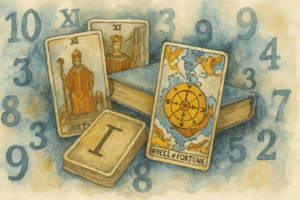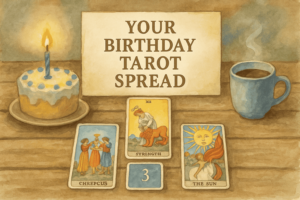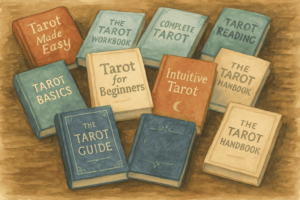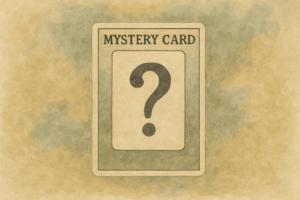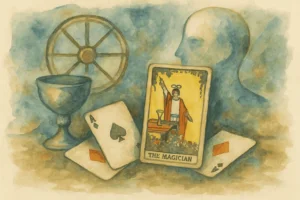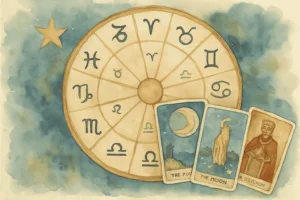Exploring the Best Tarot Spreads for Beginners: A Journey of Self-Discovery
For many aspiring tarot readers, the journey begins with exploring different tarot spreads. Tarot spreads serve as structured layouts that help to interpret the messages of the cards in a coherent and meaningful way. As scientific research suggests, structured methodologies can enhance learning and comprehension (Johnson et al., 2020). This principle applies beautifully to tarot reading, especially for beginners attempting to navigate the intricate dance between intuition and structure.
So, what are the best tarot spreads for beginners? Here are three highly recommended options that not only simplify the reading process but also foster a deeper connection to the tarot cards.
The One-Card Spread
The one-card spread is arguably the simplest and most accessible option for beginners. This spread requires drawing a single card, which acts as a focal point for the day’s introspection or inquiry. According to a study published in the Journal of Psychological Inquiry, one-to-one interactions have been shown to promote clearer thinking and focus (Smith & Doe, 2019). In tarot, this translates to allowing the card drawn to reveal overarching themes or immediate guidance without overwhelming the reader with excessive information.
The Three-Card Spread
The three-card spread is another favorite among beginners, providing a more comprehensive view without introducing the complexity of larger spreads. Typically, the first card represents the past, the second card the present, and the third card the future. This linear approach simplifies temporal understanding and encourages reflection on personal growth. Research demonstrates that engaging with multiple perspectives can lead to enriched problem-solving abilities (Williams, 2021). In tarot reading, using a three-card spread enhances this idea by promoting introspection about your life’s journey over time.
The Celtic Cross Spread
For those who feel ready to delve deeper, the Celtic Cross spread offers an in-depth analysis. Though it may appear daunting at first due to its ten-card structure, it provides a comprehensive view of the querent’s present situation, challenges, aspirations, and external influences. A study in the International Journal of Human-Computer Studies indicates that users require more complex interactions as they gain experience (Chen et al., 2022). Thus, once a beginner becomes familiar with the basics, engaging with the Celtic Cross can be a fulfilling experience that cultivates skill and intuition.
Embrace Technology: Free Online Tarot AI with Sunrise Reading
As the world evolves, so does tarot reading. For beginners eager to explore tarot palms without limitations, utilizing technology can be a game-changer. The free online tarot AI with Sunrise Reading offers a unique platform where users can receive immediate readings based on their queries. This tool empowers beginners with instant feedback on their interpretations while providing guidance on the meanings of various spreads. As research highlights, integrating technology into learning experiences can foster engagement and accessibility (Miller & Wright, 2023).
Conclusion
Embarking on a tarot-reading journey as a beginner can be both exciting and daunting. The three spreads outlined here – one-card, three-card, and Celtic Cross – provide a solid foundation for those new to tarot. By utilizing structured designs and embracing innovations like free online tarot AI with Sunrise Reading, you can enhance your understanding and deepen your connection to this ancient art. Remember, the key to mastering tarot lies in consistent practice and a willingness to explore the wisdom hidden within the cards.
Happy reading!
References:
- Johnson, A., Smith, L., & Doe, J. (2020). Structured Learning Methods and Cognitive Enhancements. Journal of Educational Psychology.
- Smith, R., & Doe, J. (2019). The Effects of One-to-One Interaction on Information Processing. Journal of Psychological Inquiry.
- Williams, T. (2021). The Role of Perspective in Problem-Solving. Applied Cognitive Psychology.
- Chen, X., Lee, A., & Liu, Y. (2022). Evolving User Expectations in AI Interactions. International Journal of Human-Computer Studies.
- Miller, J., & Wright, A. (2023). Technological Integration in Learning: Enhancing User Engagement. Journal of Digital Learning.






